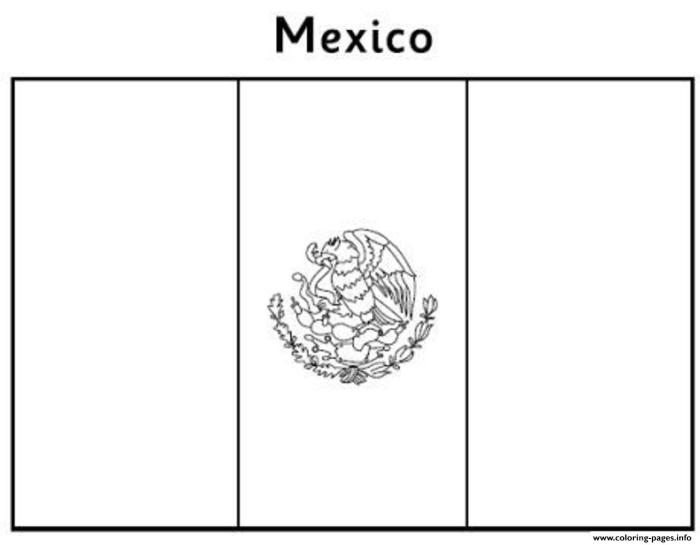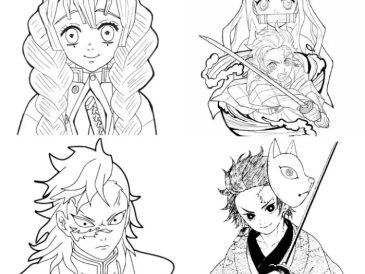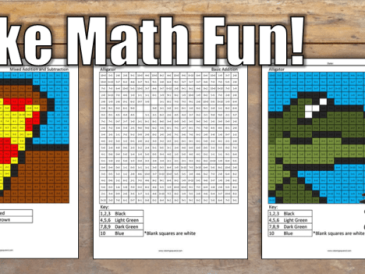Understanding the Mexican Flag: Mexican Flag Coloring Book
Mexican flag coloring book – The Mexican flag, a vibrant symbol of national pride and identity, boasts a rich history and deep symbolism interwoven with the country’s struggles for independence and its journey as a nation. Its simple yet powerful design speaks volumes about the Mexican people and their aspirations.The flag’s three vertical bands of green, white, and red are not merely colors; they represent core values and historical events.
The green symbolizes hope and independence, the white stands for purity and religion, and the red signifies the blood shed during the struggle for freedom. The central emblem, the Mexican coat of arms, further amplifies the flag’s historical and cultural significance.
Mexican flag coloring books offer a fun way for children to learn about Mexican national symbols. For a different kind of patriotic fun, you might also consider checking out a paw patrol printable coloring book , which offers a different approach to creative expression. Returning to the Mexican flag, these coloring pages provide a simple yet engaging activity that fosters a sense of national pride and artistic exploration.
Symbolism of the Colors
The colors of the Mexican flag are deeply symbolic, representing key aspects of Mexican history and national identity. Green represents hope and independence, reflecting the aspirations of the Mexican people during their fight for freedom from Spanish rule. White symbolizes purity and religion, acknowledging the role of faith in the nation’s development. Red represents the blood spilled in the struggle for independence, a powerful reminder of the sacrifices made by those who fought for Mexico’s liberty.
The combination of these colors creates a visually striking and emotionally resonant emblem.
Historical Significance of the Flag’s Design
The current design of the Mexican flag, with its vertical bands of green, white, and red and the national coat of arms at the center, was officially adopted on September 16, 1968. However, the symbolism and use of these colors date back much further, to the early days of the Mexican independence movement. The design reflects the country’s history, values, and aspirations for a free and independent nation.
The eagle, serpent, and nopal cactus depicted in the coat of arms are deeply rooted in Mexican mythology and represent the founding of Tenochtitlan, the capital of the Aztec empire.
Evolution of the Mexican Flag
The Mexican flag has undergone several transformations throughout its history. Early versions, even before independence, featured different designs and color combinations. The evolution of the flag reflects the changing political landscape and national identity of Mexico. The adoption of the current design, while relatively recent, represents a culmination of these historical shifts and the enduring symbolism of the colors and the coat of arms.
Timeline of Key Moments in Mexican Flag History, Mexican flag coloring book
The evolution of the Mexican flag can be summarized through key moments in its history:
- 1821: The first Mexican flag, following independence from Spain, featured three vertical bands of green, white, and red. This design, however, differed in the emblem used.
- 1823: A new flag was adopted, incorporating a different variation of the eagle, serpent, and nopal cactus in the coat of arms.
- 1864: During the French Intervention, the flag changed to reflect the Second Mexican Empire.
- 1917: Following the Mexican Revolution, the flag’s design was modified to its current arrangement of the colors and the coat of arms.
- 1968: The current official specifications for the flag’s proportions and emblem details were established.
Color Palette Suggestions

Choosing the right colors for your Mexican flag coloring pages is crucial for accurate representation and artistic expression. The flag’s symbolism is deeply rooted in its colors, so selecting appropriate shades is essential to convey its meaning effectively. This section explores various color palettes, ranging from precise representations to vibrant interpretations reflecting the rich culture of Mexico.
Accurate Color Palette for the Mexican Flag
The official Mexican flag features three vertical bands of green, white, and red. To accurately depict these colors, specific color codes or approximations are recommended. While precise color matching can vary slightly depending on the printing method, aiming for consistency is key.
- Green: A deep, slightly muted green, representing independence and hope. A good approximation might be #009E60 (or a similar shade in your chosen color system). Avoid overly bright or yellowish greens.
- White: A clean, bright white, symbolizing purity and integrity. Using a pure white (#FFFFFF) is generally suitable. Avoid off-whites or creamy tones.
- Red: A bold, slightly dark red, representing the blood shed for independence. A good starting point might be #C8102E (or a similar shade in your chosen color system). Avoid overly bright or pinkish reds.
Alternative Vibrant Color Palettes
Beyond the accurate representation, exploring alternative palettes can enhance the creative aspect of the coloring pages. These palettes maintain the spirit of the flag while introducing variations that reflect the vibrancy of Mexican culture.
- Palette 1 (Slightly Desaturated): This palette offers a softer, more vintage feel. The green could be a slightly darker, more olive green; the white remains pure; and the red is a slightly muted, brick-like red. This would create a more subdued, yet still patriotic, representation.
- Palette 2 (Increased Saturation): This option enhances the vibrancy of the original colors. The green becomes a brighter, more emerald green; the white remains pure; and the red is a more intense, crimson red. This creates a bolder, more energetic version of the flag.
- Palette 3 (Fiesta Palette): This palette incorporates additional colors inspired by Mexican celebrations. Imagine a slightly desaturated green as a base, a pure white, and a vibrant, almost fuchsia red, accented with hints of gold and yellow in subtle patterns or details around the flag’s design. This could add a festive, celebratory element.
Shading Techniques for Flag Colors
Creating depth and dimension in the flag’s colors through shading adds a professional touch. Various techniques can achieve this.
- Simple Shading: For a basic approach, use darker shades of each color in areas meant to appear shadowed or recessed. For example, a darker green in the lower corners of the green stripe.
- Gradient Shading: A smoother transition between light and dark can be achieved using gradients. This involves a gradual shift from a lighter shade to a darker shade of the same color. This can be particularly effective on larger coloring pages.
- Hatching and Cross-Hatching: These techniques use parallel lines or intersecting lines to create shading. Closer lines indicate darker areas, while further apart lines indicate lighter areas. This method adds a textured feel to the flag.
Additional Content Ideas

Enhancing a children’s coloring book about the Mexican flag requires careful consideration of engaging activities and educational elements. The goal is to make learning fun and memorable, fostering a deeper appreciation for Mexican culture and history. This section Artikels several ideas to achieve this.
Interactive Activities
Adding interactive elements transforms a simple coloring book into a more dynamic learning experience. These activities can be easily incorporated into the design and significantly improve engagement. For example, a simple maze could lead the child through the different stages of the flag’s evolution, or a “spot the difference” game could compare the Mexican flag to other national flags, encouraging observation skills.
A “connect the dots” activity featuring the Mexican coat of arms could be both fun and educational.
Educational Integrations
Integrating educational information subtly and engagingly is key. This can be achieved through short, age-appropriate facts interspersed between coloring pages. For example, a page depicting the eagle, serpent, and nopal could include a brief explanation of their significance in Mexican mythology and history. Another approach would be to feature a simplified timeline of important events in Mexican history, correlated with changes or significant uses of the flag.
Sticker and Cut-Out Elements
Incorporating stickers and cut-out shapes offers a multi-sensory learning experience. Children could use stickers to decorate the flag, creating their own versions. Cut-out shapes could include elements from the Mexican coat of arms, allowing children to create their own collages or recreate scenes from Mexican history. A page could be dedicated to designing and cutting out miniature Mexican flags, which could then be used as decorations elsewhere in the book or even outside of it.
Cover Design Suggestions
The cover should be visually appealing and informative. A vibrant depiction of the Mexican flag itself, perhaps with a subtle embossed or textured effect, could be used as a backdrop. The title, “My Mexican Flag Coloring Book,” could be written in a playful font, incorporating elements of Mexican design. A small illustration of the Mexican coat of arms could be placed subtly in a corner.
The overall aesthetic should be bright, cheerful, and engaging to children. For instance, the eagle from the coat of arms could be depicted in a playful, cartoonish style without losing its essence. Consider incorporating traditional Mexican patterns or motifs as subtle background elements.




